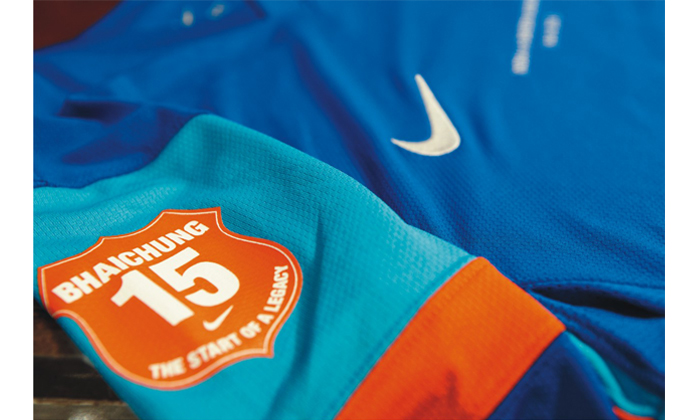The Caribbean Isles are a dream destination for people all over the world. Yet, surprisingly in 2011, several Indian cricketers and footballers shunned a visit to these exotic islands. It is not that sportsmen are blasé and indifferent to the visual delight of these islands.
Officially eminent cricketers like Yuvraj Singh and Gautam Gambhir skipped the West Indies tour due to fatigue and injuries. In football five leading clubs East Bengal, Mohun Bagan, Pune FC, Salgaocar and Dempo refused to release their players for the tour to the Caribbean islands stating that their pre-season training was getting disturbed.
However the real reason for the discontent is the brewing club vs country dispute which in the future can have serious repercussions on international sport. Kindle’s July issue had carried a thought provoking article on the Country Club dilemma and how Gautam Gambhir’s shoulder injury had triggered off a raging debate on whether our players are putting clubs over country. In cricket, this is a new problem but in football, this dilemma has existed for decades.
For over a century, star players became wealthy by representing their clubs rather than their country. England’s 1962 World Cup captain Johnny Haynes became the first player to get the princely sum of 100 pounds a week, from his club Fulham. Legendary Ferenc Puskas stopped playing for Hungary after 1956 but earned lots of money by defecting to Spain and playing for Real Madrid. Players opting out of international football and focusing on their club careers have been a regular feature. Recent examples are Paul Scholes (Manchester United) and James Carraghar (Liverpool). After the 1986 World Cup, defender Julio Cesar quit playing for Brazil to concentrate on his European club career.
In Indian football, the crisis of club vs country started in the 1970s, during the peak of the Naxalite movement. Football was used by the former Chief Minister of Bengal, Siddharth Shanker Ray as a diversionary tactic. It is learnt that SS Ray wrote to the then Prime Minister Mrs. Indira Gandhi requesting that, for political reasons the Kolkata based players be spared from international duty. The Kolkata league was then played in June, July and August and the Merdeka tournament in Malaysia was held in July-August.
SS Ray wanted the Kolkata players to participate in the local league so that revolutionary students would be weaned away from their extreme left politics by their love for football. East Bengal was at their peak, and their fanatical supporters hero-worshipped their star players.
Traditionally East Bengal’s passionate supporters are either displaced people from that geographical region (now Bangladesh) or those who came to Calcutta in search of employment. In the early seventies, the young men who supported East Bengal were the first generation of those born in Independent India but who grew up in refugee tents in the aftermath of partition in 1947. These men had a nostalgic longing for their homeland and bitterness about life, contrary feelings, which got amalgamated in their fervent support for East Bengal club, as a source of collective joy and to cock a snook at the traditional establishment of West Bengal. Many of them were also attracted by the ideology of the Naxalite movement.
Indian teams for the 1973 and 1976 Merdeka tournaments were thus without the Kolkata players. This set a trend in Kolkata football, club before country, which led to a major controversy prior to the 1982 Asian Games. On 19 February 1981, just before the transfer season in Bengal, 21 players- 19 from Bengal and one each from Kerala and Andhra Pradesh- walked out of the national camp in defiance of their parent body. Their loyalty lay with the lucrative club offers rather than the national team.
Though labeled as “rebels” and “deserters” and condemned by Prime Minister Mrs. Gandhi and Bengal Chief Minister Jyoti Basu, the players remained defiant. The pragmatic Field Marshal Maneckshaw, president of the defunct All India Council of Sports negotiated a compromise. He compelled the All India Football Federation (AIFF) to compensate all players on national duty with Rs. 2,000 per month.
In 2011 the Goa-Bengal rivalry and ego problems also escalated the crisis. Dempo ordered their players to return from the national squad as they felt that the AIFF had compromised allowing the Kolkata clubs, to release a few players only. Clubs also dreaded a repeat of the 2010 scenario when Bob Houghton had ensured that 30 leading players on a national contract were unavailable to the clubs for over six months. This season the players have received handsome advances from the clubs, hence the apprehension about excessive international commitments.
The U-23 year’s national team has received offers to tour the Middle East. There is also a tour to England in early September with matches against Pakistan, and age-group England and Scotland teams. The AIFF secretary Kushal Das persuaded the clubs to relent for the West Indies tour but the danger is still lurking. For decades, the AIFF haphazardly prepared the national team. Now with their newly acquired wealth, the AIFF is trying to develop a strong national team by arranging more international exposure. This is causing heartburn to the clubs. A compromise formula will have to be reached otherwise the club-country dilemma in Indian football will escalate.














